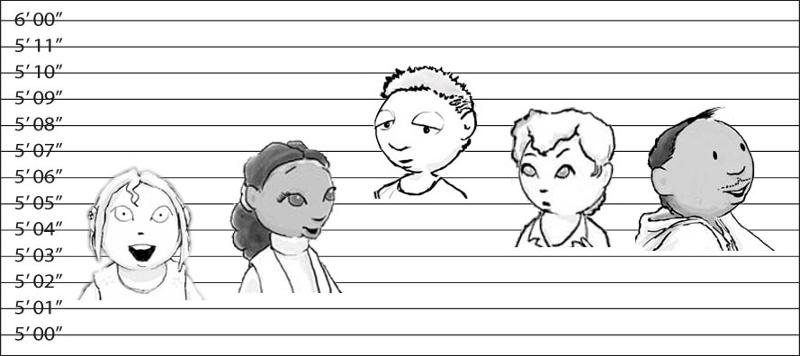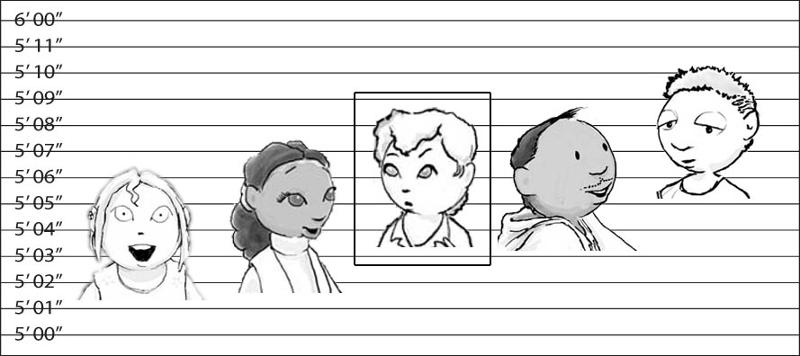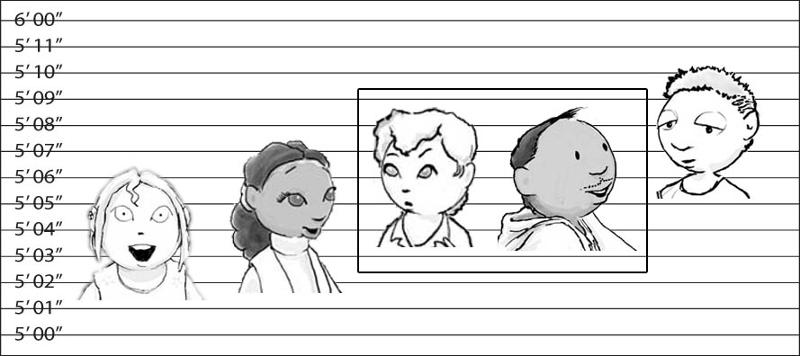Definitions of Basic Statistical Terms
N
"N" is usually used to indicate the number of subjects in a study. Example:
If you have 76 participants in a study, N=76.
The Three Ms
Mean
 The average result of a test, survey, or experiment.
The average result of a test, survey, or experiment.
Example:
Heights of five people: 5 feet 6 inches, 5 feet 7 inches, 5 feet 10 inches, 5 feet 8 inches, 5 feet 8 inches.
The sum is: 339 inches.
Divide 339 by 5 people = 67.8 inches or 5 feet 7.8 inches.
The mean (average) is 5 feet 7.8 inches.
Median
The score that divides the results in half - the middle value.
Examples:
Odd amount of numbers: Find the median of 5 feet 6 inches, 5 feet 7 inches, 5 feet 10 inches, 5 feet 8 inches, 5 feet 8 inches.
Line up your numbers from smallest to largest: 5 feet 6 inches, 5 feet 7 inches, 5 feet 8 inches, 5 feet 8 inches, 5 feet 10 inches.
The median is: 5 feet 8 inches (the number in the middle).

Even amount of numbers: Find the median of 7, 2, 43, 16, 11, 5
Line up your numbers in order: 2, 5, 7, 11, 16, 43
Add the 2 middle numbers and divide by 2: 7 + 11 = 18 ÷ 2 = 9
The median is 9.
Mode
The most common result (the most frequent value) of a test, survey, or experiment.
Example: 
Find the mode of 5 feet 6 inches, 5 feet 7 inches, 5 feet 10 inches, 5 feet 8 inches, 5 feet 8 inches.
Put the numbers in order to make it easier to visualize: 5 feet 6 inches, 5 feet 7 inches, 5 feet 8 inches, 5 feet 8 inches, 5 feet 10 inches.
The mode is 5 feet 8 inches (it occurs the most - two times).
Significant Difference
Significance
The measure of whether the results of research were due to chance. The more statistical significance assigned to an observation, the less likely the observation occurred by chance.
p-value
The way in which significance is reported statistically (i.e. p<.01 means that there is a less than 1% chance that the results of a study are due to random chance). Note that in general p-values need to be fairly low (.01 and .05 are common) in order for a study to make any strong claims based on the results.
Example:
- A study had one group of students (Group A) study using notes they took in class; the other group (Group B) studied using notes they took after class using a recording of the lecture. Students in Group A scored higher on a test than Group B. The study reports a significance of p<.01 for the results.
- This means that whatever the reason students who took notes in class did better on the test, there is only a 0 - 1% chance that the results are due to some random factor (such as Group A having smarter students than Group B).
Correlation
Correlation
The degree to which two factors appear to be related. Correlation should not be confused with causation. Just because two factors are reported as being correlated, you cannot say that one factor causes the other. For example, you might find a correlation between going to the library at least 40 times per semester and getting high scores on tests. However, you cannot say from these findings what about going to the library, or what about people who go to libraries often, is responsible for higher test scores.
r-value
The way in which correlation is reported statistically (a number between -1 and +1). Generally, r-values should be >+/-.3 in order to report a significant correlation.
- An r-value of -1 indicates a extreme negative correlation between two variables - as one variable's value tends to increase, the other variable's value tends to decrease.
- An r-value of +1 indicates an extreme positive correlation between two variables - as one variable's value tends to increase, the other variable's value also tends to increase.
- An r-value of 0 means there is no correlation at all between the elements being studied.


